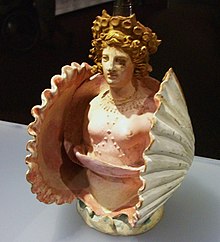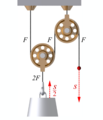Wright State University Lake Campus/2018-9/Phy1050/Notes
| Today is Sunday, December 22, 2024 Current time is 15:35 UTC |
{{subst:callforcontributions}} {{subst:Pagemove announcement}} Draft:Archive/2024/ {{Pages purged of links}} blog (more) Journals: 2020 2021 2022 2023 2024 Top
[edit | edit source]Tue 28 August 2018 (UTC)
[edit | edit source]Quiz: C0 22-23
Wed 29 August 2018 (UTC)
[edit | edit source]- Looked at OSU coding videos. Do we want to continue? No.
- QB/b motionSimpleArithmetic (Solutions)
Thu 30 August 2018 (UTC)
[edit | edit source]Review simple arithmetic: In class project to explain how to do them
Writing project on the area under a velocity V time graph
|
|---|
Goal group lab: Explain the relationship between area and distance on a v(t) graph. Define average velocity as distance over time Instantaneous velocity as a concept that will be undefined. As a footnote/example introduce area of rectangle and triangle. define symbols v and t as velocity and time I use v(t) as a v versus t graph Examples:
|
Friday/Tuesday
[edit | edit source]
n = 1, 2, 3: fn = n·f0
Worked on selected topics in QB/b waves PC The frequency of normal modes on a string:
- Obvioiusly
Wed 5 Sep 2018
[edit | edit source]Kahn academy beats: https://www.youtube.com/watch?v=Ca91iOVGd9A&t=39s
Thur 15:22, 6 September 2018 (UTC)
[edit | edit source]http://www.szynalski.com/tone-generator/
Fri 7 Sep 2018
[edit | edit source]- Why Bach sounds funny on the piano
Danse Macabre:
Mon 10 Sep: Resonances/Slidewhistle
[edit | edit source]Defined resonance and looked at a simple 3/2 resonance on slidewhistle
Tues 11 Sep
[edit | edit source]Wed
[edit | edit source]We did musical harmony calculations on a spreadwheet.
Thursday
[edit | edit source]- Review Danse Macabre electronic and orchestral
Today we will simulate the musical fifth (p/q=3/2) and show that it is an even signal.
- Google wikiversity saros and your friend's pet lizard to understand why the ancient Babylonians and Greeks used this mathematics to predict eclipses. This math suggests some simple multiple of 6 time steps would give us something interesting. I tried 24 and it worked (just barely).
- The top of the first column is "t". The top of the second column is 3 (hungry every three days).
- Below the "t" is 0 and below that is "=A2+1". Fill down.
- Below the 3 we need a sine wave. We shall use $ to fill down and to the right in the B column that we shall later move to the C column: =SIN($A2*PI()/B$1)
- Graph this curve as a scatter plot with smoothed curve fit.
- If all goes will, fill the entire column to the right two columns. Of these three signals, replace the first column by the sum of the other two, and make the period of the others be 2 and 3.
Friday 16 sep
[edit | edit source]- See First_effort_by_PHY1110_and_1050 where we created a parabola by rolling the small steel ball.
Monday 15:37, 17 September 2018 (UTC)
[edit | edit source]Resonance and vortex shedding
[edit | edit source]The Tacoma Narrows Bridge was destroyed by a 1:1 resonance f_1/f_2 = 1/1. It routinely happened at certain wind speeds. But wind gusts are typically irregular in frequency[2] These pictures explain what might have been going on.
Music and resonances:Physics classroom
[edit | edit source]- https://www.physicsclassroom.com/class/waves useful for QB/b waves PC Skip?
The issue in Bach's day
[edit | edit source]- A comparison of three different tunings: the Bach-Lehman temperament, the equal temperament (2:08), and then Werckmeister III (4:16), a commonly used Well Temperament.
Pictures at an exibition: Great Gate of Kiev
[edit | edit source]- https://www.youtube.com/watch?v=b8gs4TozJbQ First 60 or so seconds is the same, with brass but no "bells". Loud part ends at 1:59 and the first Bells I could find are at 2:27, but its a preview to the Bells that Mussorgsky put in the theme. An orchestral recap begins at 3:29 without bells. Finally at 4:30 you hear the Bells.
- https://www.youtube.com/watch?v=YAq7Im6XvGk All we need is from 17 to 60 seconds into the piece. Look for the beats in the long notes. They sound like bells.
- http://www.cumbria.gov.uk/elibrary/Content/Internet/537/6077/6078/6753/42072154646.pdf This essay mentions the sound of Bells in the piano piece but makes no attempt to explain the physics of it. Here is a quote from it:
| “ | Some musicians think Mussorgsky’s piano suite should have been left alone. One critic
compared orchestrating it to defacing the black and white sketches by colouring them in. |
” |
Further reading
[edit | edit source]- https://pages.mtu.edu/~suits/Physicsofmusic.html is unfortunately copywrited. Otherwise it would be a good source of material for this project.
- http://www.hibberts.co.uk/strike.htm tells me this is far to complicated for any of us to understand: Why or even if Mussorgsky managed to make the piano sound like bells is beyond the scope of this course!
Tue-wed 19 Sep
[edit | edit source]We developed ♠/Slide whistles and harmony in draft space. See special:permalink/1921939
Thur 20 Sep
[edit | edit source]Fri 28 sep
[edit | edit source]| 15 | 30.45 |
| 20 | 19.68 |
| 25 | 16.95 |
| 30 | 14.84 |
| 35 | 14.37 |
| 40 | 13.01 |
| 45 | 12.83 |
| x | y |
|---|---|
| 0.066666667 | 0.032840722 |
| 0.05 | 0.050813008 |
| 0.04 | 0.05899705 |
| 0.033333333 | 0.067385445 |
| 0.028571429 | 0.069589422 |
| 0.025 | 0.076863951 |
| 0.022222222 | 0.077942323 |
Mon 1 Oct: Human eye model start
[edit | edit source]
lengths in cm. No water. Image prjected on screen (inverted) 454.5 cm plus/minus 0.75 cm objeect to coronal lens 13 cm pm 0.1 cm retina (image) to lens 91.5 cm pm .5 cm object height 2.5 cm pm .1 cm image height check: 2.5/13 = 91.5/454.5 LHS = .192 RHS = .201 201/192 = 1.05
T-W 2-3 Oct: Human eye model with diaphram and water and glasses
[edit | edit source]- Ray through center of thin lens
- diaphragm
- Ray diagram worksheet
- phet light-and-radiation
- Eye diaphram 1 2
R 4 oct Hunting the Edge of Space
[edit | edit source]Class did four questions 13:25 minutes into Nova's Hunting the Edge of Space: Hour 1. See special:permalink/1927623 and QB/e test1
W 16:07, 10 October 2018 (UTC) Pulleys
[edit | edit source]We have lots of options today:
Do part II of NOVA: Hunting the Edge of Space
[edit | edit source]I don't like this too much because it is more astronomy than physics. We already did lenses.
Lab with pulleys
[edit | edit source]http://www.batesville.k12.in.us/physics/PhyNet/Mechanics/Energy/Labs/pulley_lab_1.htm
NOVA: Newton's Dark Secrets
[edit | edit source]
This is more appropriate for Phy1050. We will need to write multiple choice questions, watching it 15 minutes at a time.
Venus and copper and Cypress and Aphrodite
Wikipedia article on Quantum Mechanics (Modern Physics)
[edit | edit source]Draft:Introduction to quantum mechanics
22 October Monday Photoelectric effect
[edit | edit source]- 4 minute video: https://www.youtube.com/watch?v=oWFK_R5hIzI
- Phet simulation: https://phet.colorado.edu/en/simulation/legacy/photoelectric
- Worksheet answers: https://www.sps186.org/downloads/basic/163614/PhotoelectricEffectNOTES.pdf
- Minute physics Schrodinger's cat: https://www.youtube.com/watch?v=IOYyCHGWJq4
Tue 23 Oct
[edit | edit source]- Quantum Mechanics with a big-mack-17:12
- We went over the draft: looked at pictures. Class "voted" to do radioactive decay.
Wed 24 Oct
[edit | edit source]
- File:E14-V20-B1-zoom.gif can be viewed by clicking and running the animation. An alpha particle can be modeled as a wavefunction that bounces back and forth in side the nucleus. The amplitude of the wavefunction gradually goes to zero as the wavefunction "escapes" from the nucleus. According to the Copenhagen interpretation of quantum mechanics, the alpha-particle is neither inside nor outside the nucleus until an observation is made. This is called a "mixed state".
- Clarification: The calculations associated with nuclear physics are so complex, that we don't have good models (see, for example Nuclear shell model, Island of stability, and File:Pairing_term_nuclear_physics.gif. In contrast, the physics of electrons and nucleii in chemistry has produced extremely accurate prediction.
- High level "anti-creationalist" was at the top of Google: http://chem.tufts.edu/science/FrankSteiger/radioact.htm
- For historical purposes, Carbon-14 is useful due to its convenient half-life: http://rses.anu.edu.au/services/anu-radiocarbon-laboratory/radiocarbon-dating-background
- Physics and Astronomy Labs/Radioactive decay with dice
- Quantum mechanics: The wavefunction for Carbon-14 is really complictaed, but in a sense, it oscillates with an amplitude correspoinding to 100% "Exists" but decayse to 50% exists in about 6,000 years.
Mon Oct 29
[edit | edit source]- Quiz on QB/d Bell.solitaire (see link to wikiversion on this page)
Tues Oct 30
[edit | edit source]Wed Oct 31
[edit | edit source]¿Dónde está Guy? я быль у врача --Guy vandegrift (discuss • contribs) 14:24, 1 November 2018 (UTC)
Thu 1 November 2018: Detector error and other loopholes
[edit | edit source]A question worth pondering: If scientists don't believe that particles think like human beings, why investigate the detector error loophole? First question: What is the detector error loophole. Class essay?
I have lots more material on Bell's theorem:
- QB/d Bell.binomial explores the question of uncertainty in the measurement.
Fri 15:05, 2 November 2018 (UTC)
[edit | edit source]- Sound delay: https://drummajor.org/marching-band-sound-delay
Tues 17:24, 6 November 2018 (UTC)
[edit | edit source]Finishing part 1 of Einstein Revealed.
- website showing both simplicty and complexity of his thinking
- translation of first? 1905 paper into English
- Einstein wasn't alone:It consists of the assumption, that the line joining two points of a solid body doesn't conserve its length -- Lorentz (1892)
14 Nov Final thoughts on Bell's theorem before starting Global Warming
[edit | edit source]File:Rotating coffee cup2.svg
14 Nov start Global warming
[edit | edit source]- Quizzes are based on w:Global warming (permalink)
Special:Permalink/1863379 to QB/b_globalWarming_1
Special:Permalink/1863380 to QB/b_globalWarming_2
Special:Permalink/1863381 to QB/b_globalWarming_3
Special:Permalink/1863382 to QB/b_globalWarming_4
See also:
- Hockey stick graph and other issues of trust in science.
- How_things_work_college_course#Global_warming
- wikibooks:High School Earth Science/Climate Change
Last week of class
[edit | edit source]Required
[edit | edit source]
Optional
[edit | edit source]- Euler's equation: Most beautiful equation in mathematics(14'30'')
- Beethoven's seventh symphony plus noise upstairs (30' - 60'?)
- intriguing-facts-about-antikythera-mechanism
- Nova movies: Antikythera or Lost at Sea?
Final Project
[edit | edit source]- You must master the 2-state 2-symbol busy beaver.
- condensed and readable version of wikipedia:Computer article. If you give it to me by Friday, I will have it graded by Monday morning and will email your final grade with instructions on how to keep and/or improve it.
- Advice: Give me something short of very high quality. Use red font to show me your prose. Email it to guy.vandegrift@wright.edu as an attached word file. Minimum of 3 pages, 5 is ideal. Optional: Multiple choice questions.
- Whether you need to attend the final on Wed 1-3 is to be determined.
- If you want to submit questions be sure to make it distinct from Special:Permalink/1863377 to QB/b_ComputerWikipedia. It's ok to take a good question and make it different, though. Also, you can add great value to questions by copy/pasting the text from the wikipedia article into the question/answers.
Either write Public Domain or give yourself a wikipedia username and we can place this under cc-by-sa.




















